Dear Artist,
Denise Dupre of Port Moody, B.C., wrote, “I began in the arts around 1997 by taking evening art classes. I loved reconnecting with my artistic abilities and have moved along steadily with my work. In the early days I decided to replicate a number of the masters’ works rather than attend art school, as my husband and I had three very young daughters then. My intent was to study their work and develop my sense of artistry of color, technique and composition. At the time, I found a great price on beautiful lengths of framing and a dear friend who worked in a framing shop at the time helped me build the frames. I have a collection of about 11 works which are completed in chalk or oil pastel, as well as varying masters’ works of conte on paper. My question to you is what to do with this body of replicated works? It would be great to have a few options I’m hoping you may recommend.”
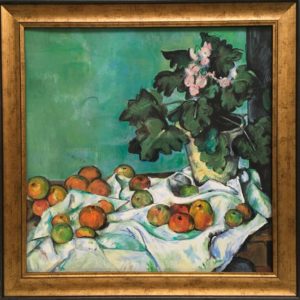
Denise Dupre’s copy of Still Life with Apples and a Pot of Primroses, ca. 1890
by Paul Cézanne (1839-1906)
Copying the masters as part of your art self-education has put you in good company, and clearly provided a lot of joy. “Take pains and pleasure in copying the best works by the hands of great masters,” wrote Giotto disciple Cennino Cennini, in his 15th century handbook, Il libro dell’arte. Dalí, Picasso, Chagall, Degas and other greats did it as part of the Louvre’s centuries-old policy of granting 250 three-month permits to amateur and professional artists for the privilege. As of 2017, there was a two-year waiting list. Amongst the ineffable sensations of connection, awe and examination that copying inspires, it’s also a way for an earnest painter to reverse-engineer otherwise mysterious technical effects, build compositional muscle memory and better understand light and colour relationships. At the Louvre, certain paintings are favoured for their difficulty, and have been tackled by more than one future master. “It’s like a free school,” said Parisian photojournalist Ivan Guilbert, who recently documented the Louvre’s modern-day copyists for the New York Times. Part mimicry, part disassemblage, part romantic, historical immersion and part soul-swap, copyists understand the power of learning by imitation.
But while copying is a skill, it isn’t invention, imagination or creative executive function. After the vision of another has been replicated and the facsimile made satisfactory, the artist, with her newfound tools, meets the precipice of the abyss of her own unrealized ideas. It is here she must leap, because the painting she copied was not her idea, and if she is an artist, she is in the business of bringing forth her own. By this definition, her copy is not hers.
And so what to do with your collection of beautiful clones? Because copying produces an object neither yours nor the original creator’s — a creation in limbo in the spirit of human expression and the ethos of creativity, it needs to be regarded explicitly as a duplicate. The market for these things — sales perhaps, in the courtyards of the great museums and definitely on the internet, now eclipsed by the deft, 6,000-workers-strong copy-painter villages of southern China, is ethically nebulous. When monetized, copies can feel closely related to forgeries. While a forger markets to deceive, a copyist borrows from the creative commons and makes it clear her work is a copy. Nevertheless, what she does next can morph into a fork in the road of her creative destiny. At the Louvre, the copyist, upon completion of her copy, must visit the director of the copy office. Madame Vieilleville checks that a canvas one-fifth smaller or larger than the original has been used, and for the absence of an imposter signature. She stamps it verso with a special Louvre seal, before signing it verso, herself. She then escorts the copyist, and her copy, to the exit.
Sincerely,
Sara
PS: “You have to copy and recopy the masters, and it’s only after having proved oneself as a good copyist that you can reasonably try to do a still life of a radish.” (Edgar Degas)
“After you’ve copied the work and learned from the experience, you need to honour the old guy by destroying your canvas.” (Robert Genn)
Esoterica: It is okay to love your copies. Ask yourself what it is you love about them. Labour and learning aside, I wonder if part of it is the intimate proximity to the aesthetic qualities of the originals. I’m besotted by these qualities when I look at your duplicates. The originals are masterworks for a reason. If you’re not yet ready to destroy your copies, title each work verso with the details of the original including the artist’s name and title and specify that it is a copy. Leave the front of the work unsigned — it is not your work. If you identify as a professional artist of original paintings, share your copies non-commercially, enjoy them personally or use them as a teaching tool. Consider thanking them for their lessons and saying goodbye. Lastly, never, ever copy the work of a living artist or any historical work not included in the creative commons. “Be careful that you do not write or paint anything that is not your own,” wrote Emily Carr, “that you don’t know in your own soul.”
Have you considered a Premium Artist Listing? With each letter, an artist is featured at the bottom of this page. The Premium Artist Listings are a means of connecting artist subscribers through their work. Proceeds from each listing contribute to the production of The Painter’s Keys.
“When we were living in Spain, I spent a day in the Museo del Prado copying part of a Velásquez. It was a mind-bending, centuries-spanning high. Giddy as a Pyrenees goat, I learned a few things. Up close and personal, Velásquez is a mess of slashes and haphazard gestures. Back a few feet, he’s a cohesive miracle. I found myself unable to copy stroke for stroke. Like a crazed sign painter, wielding well-thinned oils, I let my body do the painting. I’ve never had a frontal lobotomy, but I think my Velásquez day was pretty close. At four o’clock when they kicked us out, I sat down on the gravel on the Plaza de Neptuno to reacquaint myself with the ordinary.” (Robert Genn, from his November 4, 2011 letter, Copying the masters)
Featured Workshop
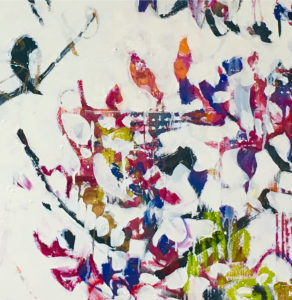 Join Ellie Harold for “Intuitive Painting: Permission to Paint Expressively,” designed especially for mature women artists of all skill levels who wish to explore this medium for soulful exploration. The retreat provides attractive accommodations (your own room!) along with lightly structured activities for centering, relaxation and low stress art-making. You’ll have plenty of free time to muse, paint, write and reflect while enjoying the colors, textures and flavors of San Miguel. This Retreat has the potential to transform not only your art but your life! You’ll return home with a specific art “care plan” to assure support for further creating. Details at www.EllieHarold.com.
Join Ellie Harold for “Intuitive Painting: Permission to Paint Expressively,” designed especially for mature women artists of all skill levels who wish to explore this medium for soulful exploration. The retreat provides attractive accommodations (your own room!) along with lightly structured activities for centering, relaxation and low stress art-making. You’ll have plenty of free time to muse, paint, write and reflect while enjoying the colors, textures and flavors of San Miguel. This Retreat has the potential to transform not only your art but your life! You’ll return home with a specific art “care plan” to assure support for further creating. Details at www.EllieHarold.com.
Featured Artist
Capturing the beauty of nature and expressing those impressions in oil paint is a joy. Every hour of the day presents new possibilities and keeps even the same landscape location, same composition, an ongoing and beckoning challenge. For this reason, I love painting series: it is exploration made visual.

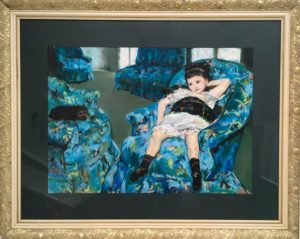
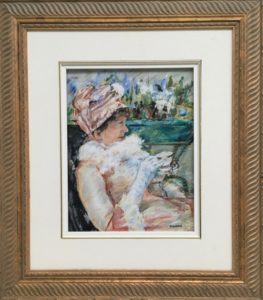
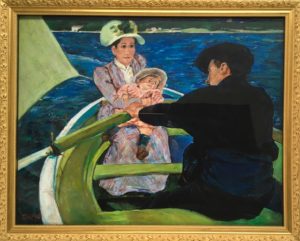




43 Comments
Mike Bidlo, Elaine Sturtevant, etc., etc.
Pardon my unfamiliarity with these people but I feel a bit more explanation is needed here.
I think Sara has been the soul of diplomacy in her answer. Having been a student of art history, these works scream “bad copies” to me, and should be seen as such. Put them in your basement and revisit them with humour in 40 years when you have found your own feet. Oh….and use those nice frames on something stunningly original.
I sympathize with Denise, who asked the question: “What to do with this body of replicated works…” that she has painstakingly created? I have taken a few workshops from professional artists wherein we copied well known masterpiece paintings, from photographs, understanding that we should not intend to sell them. However, as an amateur, I have had friends and relatives ask me to paint copies of 3 different still life paintings by Cezanne, and The Girl with the Pearl Earring, by Vermeer. I have done so, with pleasure, charging a little for my time, and for the cost of the canvas, and a portion of the other supplies, so that the price to the buyer is approx $300. for a 16 x 20 inch oil painting, on stretched canvas, unframed. This is not a way to make a living, but it brings joy to me and to my buyer.
As a wannabe artist, I did not have the privilege of devoting years to developing my skills and explore my “message”, as I had to earn a living, which I did as a nurse, and then as a family doctor. I also had a biological drive to create a family and raise children. These activities were very fulfilling, and I have no regrets about these choices. After retirement, I have been able to develop some skills as an amateur artist. Hence I am trying to defend my attitude, that copying CAN be useful, outside of learning.
I find it just so elitist to again hear ( from Sara, and many others in the art world) these ‘put downs’ of any form of art, other than ORIGINAL art, that is created by a TRUE artist and ideally that conveys a MESSAGE that is profound for society.
At the same time, collage, photography, and digital art is being admired, and large dollars are invested by the wealthy in NFT’s, whatever they are????
Within one’s own community, I think it is fair to offer to sell copies, when they are clearly identified as such, and when the price is not inflated. This can provide artistic fulfillment to the copiest and joy to the buyer. Please reconsider your answer to Denise. — sincerely — Melodie Herbert.
I agree with Melodie Herbert.
Me too. Are classically trained pianists frauds because they replicate Mozart having never composed an original work? Amateur painters are often sincere and passionate creators evolving, learning and sharing. Meanwhile, professional painters are more often market, gallery and collector driven
I wasn’t going to reply to this but its been picking at me, so I’ve come back to comment. L Anderson Stewart’s post and sensibility is professional. Her truly stunning and heart felt work is anything but focussed on galleries, collectors etc. She has spent a lifetime honing her craft, so her response really resonates with me. She knows what it takes. As does Sara.
I know that there are many many amateur artists who frequent this wonderful site, and I would never discourage any of you from following your inclinations, and if you can make a few bucks selling your master copies, then that’s fantastic. But don’t delude yourselves about the true market value, that’s all that’s being said here. Art really is big enough for everyone. And please don’t assume that you know what professional artists are focussed on. Many of us live very humble lives focused on the best art we can make.
When I was getting back into painting in my 30s, I visited major museums and immersed myself in the masters. Back in the studio, I couldn’t find my own voice because all the paintings I had studied filled my mind. So I undertook a project, to paint self portraits in the styles of the painters I admired. This included Picasso, Goya, Kokoschka, Redon, and others. I had a hard time with some, an easier with others, teaching me what is closer to my natural style. And when the project was done, I had painted those artists out of my mind.
Interesting letter and responses, all of which I agree with, if it is stated on the copy that it is a copy of a painting done by a master from the past, who does that hurt? If the artist who copied it feels good about the whole endeavor, that’s fine. For me, copying anything that isn’t artistically searched out by my own personal artist’s soul feels empty and dead without any sense of joy. This is why I say no to commissions. No thanks. I don’t want to paint someone else’s vision and idea, it’s a painful and stressful mission I care to not take on, and thankfully I have been able to say no because I’m not trying to pay the mortgage on art sales. I’ve seen masters copies done by artist friends who hang them in their home and tell the story behind it. Art is about stories, too, and if the stories are honest, I feel it’s okay.
My watercolor teacher told us that when we copied someone’s work, we should write “after xxx” (e.g. after Sargent) and then sign our own name below it.
I like this approach as it gives credit to the original artist as well as a nod to the aspiring artist’s endeavors…
I appreciate this inclusionary thinking and approach. Thanks
Agree & wish this practice was followed by artists who copy others’ work. It’s not only (in many cases) a copyright issue; it’s also a matter of respect for the true originator of the piece.
I once copied a photograph for a woodcut image for a printmaking class. I pulled three good prints, then felt embarrassed that I had used another artist’s work. Many years later I met the photographer, and summoned the courage to tell him that I had copied his work, and didn’t know what to do with my prints. He suggested the “after xxx” which I did. I framed one print and gave it to the photographer, framed a second print and donated it for an auction fund-raising event, and the third print remains in my personal collection. I have no desire for monetary gain from the remaining print. I will keep it as a memory of the learning experience, and because the image is compelling enough to inspire copying it!
What to do with the replicated works? That’s a tough one as what comes to mind is what do about any of the handy-work we put in over the years in our artistic journeys. Framing also is a part of that…some we sell, some we keep, some we give away and some we destroy.
These must have been rewarding to do. To me the value they hold is what you have learned from them rather than the finished copy itself.
Ultimately, if we are seeking to share an authentic voice, I would keep the works to revisit what I have learned from the “replicating” and what I could “steal” from the artists copied, as explained in Austin Kleon’s best-selling book “Steal like an Artist.”
Sara’s suggestion on using the works as teaching tools is a good one.
For me the question becomes how to honour other artists and their work, and how to share these things.
I believe there is an authentic artist in all of us and ultimately finding that becomes an ongoing exploration, which may involve copying, but more so, studying and allowing other artists to influence us and help bring forth a combined creation from our own mind, heart and soul.
May your painting journeys ahead bring ongoing joy.
To me there are many questions in the quest to copy. One can trace the subject and fill in the colors, and learn n nothing of the technique. If one want to learn from Mary Cassatt, you really have to put yourself in that boat. Learning how someone painted successfully involves really looking at the stroke level and believing you know what you are looking at. At ten feet one sees very little of what makes something work. A copy made at that distance is a post card made from a phone camera. Robert spelled it out in 2011. The Masters are of their status because they figured out how they would go about business in their own time, and times. Art appreciation is a wonderful talent. Thanks, Sara
Copying………… hmmm, yes I have done it, perhaps too many times in my early days of painting. I confess I did not copy as a means to learning but because I was desperate for results. As children my brothers and I copied our pencil drawings from books which probably fed my love of art. I now feel that this propensity to copy has impeded my own creativity. Technical skill can be learned by anyone, a truely creative drive must be carefully nurtured and is, in my view the greater treasure of the two. Be careful what you wish for.
Such a well worded reply! I have a one word response: Ditto!
Having been born in the late 30’s in southern Saskatchewan where the prairie landscapes and the wrap around skies are ever changing, to have missed out on even coming close to doing a lovely representational work would leave me feeling devastated.
Even copyrighted books allow for copying material for review(s) of the publication. It all comes down to intent.
Legally, copyright means thou shalt not copy nor duplicate, period. In reality, imitation is the sincerest form of flattery. Using an original for study purposes and then selling that single piece as a “copy” for a nominal price at a later date is very unlikely to raise any eyebrows. Making and selling multiple prints of that copy, or including it in a published work is a different matter. The piece then goes from a “personal copy” to a “commercial product” with the object of profiting from another’s endeavor.
It is somewhat akin to driving 32 MPH in a 30 MPH zone. Yes, the law is being broken, but you are still within a gray area where prosecution is highly unlikely. Signing your copy on the rear surface and including “After XXX” is not just a courtesy, but a nod of respect to the original artist. It also verifies your true intent – which is always the central issue.
When starting out with oils in grade school, there was no art program. My subjects were either placed on the kitchen table or copied from the Walter Foster series of books. Robert Wood and Leon Franks were my favorites, and many hours were spent making “copies”. If somebody liked one, it was promptly gifted to them. Technically it may have been a copyright issue, but in reality neither artist had anything to fear from my efforts.
Such a well worded reply! I have a one word response: Ditto!
Having been born in the late 30’s in southern Saskatchewan where the prairie landscapes and the wrap around skies are ever changing, to have missed out on even coming close to doing a lovely representational work would leave me feeling devastated.
Loved this, thanks for the wonderful letter!
According to the law, copyright prohibits all forms of duplication. Actually, the purest form of flattery is imitation. It is quite unlikely to draw any attention if a single piece of an original is used for research then sold afterwards as a “copy” for a small fee. It is another thing entirely to produce and market numerous copies of that copy or to include it into a published work.
Your advice and information are much appreciated. I’ll try to learn more.
Denise seeks guidance on her collection of replicated masters’ works, created while raising her young daughters. She honed her skills through self-study, focusing on color, technique, and composition.
Denise Dupre’s artistic journey, mimicking masters, led to a collection of replicated works. Displaying them locally, perhaps alongside information about their inspiration, is a solid option.
Moto X3M Your advice and information are much appreciated. I’ll try to learn more.
Love pairing my kitten heels with cropped jeans and a blazer — effortless style!
I’ve worn a ton of running shoes, but nothing compares to on cloud .
My on cloud experience has been nothing short of amazing. From the first wear, I noticed a big change in how supported and cushioned my feet felt. The design is stylish and practical. I even got compliments on them! On Cloud has definitely raised the bar for everyday athletic shoes.
I recently started jogging and wanted something reliable. A friend recommended on cloud trainers , and I’ve been in love with them since day one. They’re incredibly supportive and reduce impact on my knees. I didn’t realize shoes could make such a big difference in performance and recovery.
Sara, this is such an insightful post! I totally agree about the value of copying masters. I found it incredibly helpful in understanding composition and brushstrokes. It’s a bit like practicing free throws over and over until you get the perfect arc. Thinking about practicing skills, have you (or anyone else reading this) ever tried translating those artistic principles into a digital format? There are some fun online platforms, like Basketball Stars, where you can experiment with angles and movement in a completely different way. It’s surprisingly similar to thinking about composition in painting! Thanks for sharing your perspective.
On Cloud Shoes
Compra tenis On Cloud Shoes en México Para correr, caminar o para el día a día Estilos cómodos y ligeros con envío gratis ¡Haz tu pedido hoy!
Grab your 30 discount at God Speed
! Experience unbeatable comfort and style with our exclusive collection, crafted for those who move fast and live bold Shop now!
Kendrick Lamar Merch
Shop Kendrick Lamar Clothing inspired by his famous hip hop music albums Modern design shirts, hoodies and sweatshirts with endless comfort
Shop official On Cloud shoes online in the UK Discover Cloud 5, Cloudnova and more Swiss engineered men’s and women’s runners built for comfort and speed
Comme Des Garcons US official store Shop limited CDG hoodies and shirts Elevate your style with new available drops
On Cloud Schuhe
Kaufen Sie original On Schuhe in Deutschland Ideal zum Laufen, Gehen oder für den Alltag Stylische On Cloud Shoes mit kostenlosem Versand
Dandy Hats are not mere fashion pieces; they are a loud expression of taste, style and eternal coolness.
Each BB Simon’s Belt is crafted with top-quality materials, ensuring comfort and longevity while enhancing any outfit. Whether you’re looking for a bold accessory or a versatile everyday option,
Transform your home with the natural beauty and calming glow of an authentic Himalayan salt lamp.
Buy Now Tenis On Cloud with premium quality and a perfect fit. These shoes are made for both men and women with perfect fit and designs.
on cloud shoes
Shop the latest On Cloud Shoes in AU, including Cloudmonster, Cloud 5, and more Performing On running shoes for men women Free Shipping!
The value of your copies is high and this is the reason why people take more interest in it. When I saw Parramatta Air Conditioning Installation I got the amazing solutions that provide the best results.
It is good to take art classes and learn how to make the best paintings. There are a lot of artists who know how to play with brushes and where to get the desired solutions. So by using the earth stabilizers I saw these best services are amazing and always have the best for us.